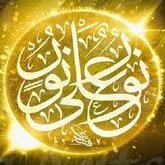-
Content count
387 -
Joined
-
Last visited
-
Days Won
6
Everything posted by Nuralshamal
-
.
-
Dear Dao Bums, I'm looking for long term practitioners of Sleeping Qigong. I've been practicing the basic level daily without fail for quite some time now, and have gotten good results. Ofc true cultivation is a long term practice, and the daily practice is pretty much the point of it all, no ultimate end goal, "just do it". However, I still feel a need to talk to and discuss with other real practitioners to share experiences and talk. It's extremely nourishing to me and my soul to "just be real". Not how things are sold, packaged, marketed or "supposed to be" in some ideal fantasy world that doesn't exist. The real, unfiltered, experiential truth. Grounded in personal, practical experience, not theory or stories. Unfortunately the "don't talk about anything to anyone" is huge in qigong, and especially many Asian cultures, so it's quite difficult to really talk to anyone legit. So looking for any long term practitioners of Sleeping Qigong to share experiences with and talk about the long term effects of the practice.
-

Do Taoist Yoga Nidra/Dream Yoga Practices Exist?
Nuralshamal replied to Oneironaut's topic in Daoist Discussion
. -

Best Online Neigong Training? (Non-Religious)
Nuralshamal replied to Charris34's topic in Group Studies
.- 24 replies
-

Qigong techniques for better, longer, deeper sleep?
Nuralshamal replied to Alchemistgeorge's topic in Daoist Discussion
. -
.
-

Jasper Lake Maoshan (Jason Read Daoist Magic)
Nuralshamal replied to Nuralshamal's topic in Daoist Discussion
Responded- 62 replies
-
- daoist magic
- talismans
-
(and 4 more)
Tagged with:
-
Dear Dao Bums, Question for you guys Do you have any interesting experiences with Jason Read and his Jasper Lake Maoshan Daoist Magic? I have seen a few posts here on Daobums about his books on daoist magic, but none about the actual daoist magic training with him. My own few observations A fellow qigong brother here on the forum that I'm corresponding with notified me about Jasper Lake Maoshan daoist magic training. I checked out his webpages and read all that I could, and am now reading through his book "Practical Daoist Magic". Webpages: I found the webpages extremely interesting, and I definitely felt what he's sharing to be real, authentic and substantial. I tried meditating on a talisman he's posted to connect with the energy of "the fire star" or Mars, and within 5 minutes I felt heat pouring into my body and getting heated up. I was extremely suprised how fast and powerfully it worked. I took this as a sign that what's he's sharing is truly legit! Book so far: The book is the same story in the sense that it feels very legit and authentic. All the history and mythology he's sharing is perfectly in line with what I've been taught by Master Zhongxian Wu (who I've learnt from for more than 6 years), as is his explanation for yin/yang, 5 elements, 8 trigrams (bagua) stems, branches etc. of course with some slight variations in their personal interpretations. His beginning practices "to cultivate magical power" is also similar to what I've learnt from Master Wu, namely building the lower dan tien, purifying & strengthening the 5 organ system, "retriving" or calling back the spirits of your organs as well as daily mantras for purification (mind, mouth, body, surroundings, pacifying spirits, calling upon the golden light etc). The idea of jing/qi/shen as well as mantra, mudra, visualisation and posture is also similar. All in all I feel it to be very real. What I especially enjoy is that as a westerner he explains things very clearly so that it's easy to understand from a western viewpoint. He also divulges the "secrets" of how things really work and explain the whole process as well as the end result. This is something my chinese teachers never do, they simply encourage you to practice, shoot down your questions, and never explain linearly and in a straight-forward way what things are, how they work, what the process is like, what the result will be or how to measure your progress along the way. The only thing that really made me stop and wonder, was that at some point in the book he says that 30 minutes before and after practice you shouldn't eat or drink (pretty standard advice), however then immediately after he says drinking "only cool water" is allowed. This is a huge shocker! Everyone knows that Chinese never suggest cold water, it should be either hot or lukewarm. This was a big suprise for me, and made me wonder and question how everything could be feel so real and authentic, yet this one basic thing was completely "off" for how Chinese qigong/TCM/cultivation usually rolls. Actually it was such a great shock that it made me question the authenticity of everything. Even though the fire star talisman worked (which I felt to build his credibility), and the explanations feel legit too (which also builds credibility) the advice to drink cool water was so off that it made me wonder and question everything about his whole story of training in China & Malaysia etc. This is what made me write a post here on the forum, I wanted to speak to my dao brothers and sisters and hear your experiences (if any) with Jason Read and his Jasper Lake Maoshan Daoist Magic training. I look forward to hear from you!
- 62 replies
-
- daoist magic
- talismans
-
(and 4 more)
Tagged with:
